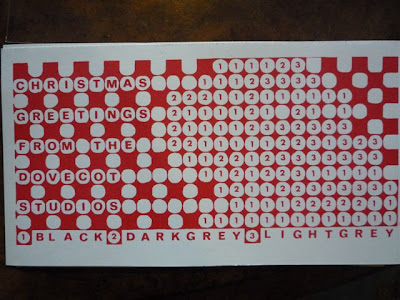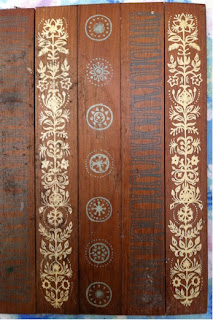 'This is a book of tales about the lives that buildings lead...'
'This is a book of tales about the lives that buildings lead...'(The Secret Lives of Buildings, p.9)
Inspiration for this blog post struck on my flight to my parent's house for Christmas. Though I was in the mood for a bit of Charles Dickens, I decided to take a book which had been on my bedside table, waiting patiently to be read: The Secret Lives of Buildings by Ed Hollis, Lecturer in Interior Design, ECA (now part of University of Edinburgh). The intention of the book is to give buildings individual biographies, as a balance to the numerous existing biographies of architects.
I have always been interested in the use of biography as an art historical tool. This partly stems from an interest in technical art history, as taught at Glasgow University. The method involves looking at the life of each object, it's meaning, creation, life etc. Ed Hollis' book struck a particular chord with my research because, though there are numberous biographies and monographs on the individuals who designed for the tapestry studio, there are very few for the tapestries themselves. So, what tales can they tell?
Have you seen these tapestries?
There are some tapestries which have not been seen or recorded for decades; they exist only in archives and black and white photographs, despite the efforts of Dovecot and other interested parties. These include:
 |
| Three Figures, 1940s, designed by Henry Moore, woven at Dovecot Studios |
 |
| Vision After the Sermon (Jacob and the Angel), c.1947, based on a painting by Gauguin, woven at Dovecot Studios |
Changing Hands
Many of Dovecot's biggest and profitable tapestries were corporate/public commissions. These include Cycle of Life (1958, Sax Shaw) for Warriston Crematorium, Genesis (1970, Robert Stewart) for Strathclyde University and Had Gadya suite (1986, Frank Stella) for PepsiCo. But, as the current recession has illustrated, companies and organisations are not fixed, and are prone to change, especially when it comes to their physical location. In some cases, when a company moves from the building a tapestry was originally intended for, the weaving may be gifted to a eminent member of staff on their retirement, or put into an auction for sale. Their are two examples of incidents such as this leading to an interesting new chapter in the tapestry's life.
 |
| BP Tapestry, 1966, designed by Harold Cohen, woven at Dovecot Studios |
The BP Tapestry, designed by Harold Cohen, was commissioned by BP for their new building in London. The weaving of this tapestry, and the collaborative process which evolved between, is an interesting story in itself, to be explored another time. When BP eventually moved from its 1960s location, Brittania House, in 1994 the company had to decide what to do with the tapestry. At over 26 feet long it was unlikely to find a comfortable new home in an office environment. Instead, it was given to the University of Hull, where is now hangs in the university library.
 | ||
| Five Gates of London, 1975, designed by John Piper, woven at Dovecot Studios |
The tapestry shown above was woven for an insurance company, Sedgwick Forbes, for the entrance foyer of their new offices on Whitechapel High Street, London. As you can see, the tapestry was designed in a similar way to a theatre backdrop, covering the full height of the wall. For the design, Piper visited the print collection of the Guildhall Print Room, in the City of London, and chose five of the City's historic gates. Many of them can be seen in this print. Sedgwick Forbes was eventually purchased by a larger financial firm, and the tapestry was put up for auction. With such a large tapestry, it is not surprising that it was bought by a gallery, rather than a private collection. The tapestry was purchased by the Guildhall Art Gallery, situated in the City of London.
| Five Gates of London, Guildhall Art Gallery |
In the years since Piper drew his design for the tapestry, the Guildhall's print collection has moved to the London Metropolitan Archives, a far less historic location. The Guildhall Print Room became part of the entertaining space of the building and, by happy coincidence, is now home to the tapestry.
Stolen!
Portrait of Mr John Noble (1979) has had one of the most adventurous lives, of all Dovecot's works. Designed by Archie Brennan and depicting the former Director of Dovecot, the portrait was stolen along with other items from the Noble family's home at Ardkinglas. Such was the disappointment of the family that a replacement was woven in 1981. Thanks to some police work, the original was eventually recovered!

























